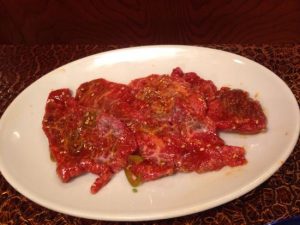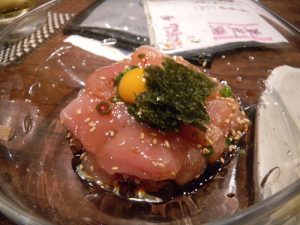I’m about to go play hockey and ref and coach for the next three hours – no complaints, it is what it is, we get the ice, we play.
My feet will hurt.
 But at least I don’t have to skate over fish.
But at least I don’t have to skate over fish.
Roland Shichijo of Tokyo Reporter writes a theme park in Kitakyushu City is facing a growing tide of criticism over its educational attraction featuring some 5,000 sea creatures frozen into an ice rink in what it boasts to be a world-first — and possibly Japan’s last.
Space World, described as a “theme park all about space” by the Japan National Tourism Organization, launched the “Freezing Port” event for its existing ice rink on November 12 as a limited winter and spring exhibition to educate visitors about marine life.
Park visitors can rent ice skates and glide over a wide variety of fish and shellfish frozen into the ice in different zones, according to the official web site, including a section featuring enlarged photos of bigger creatures such as whale sharks that some mistook to be real.
Many of the fish used for the attractions were unfit for retail sale and sourced from public fish markets, a Space World official said.
The theme park promised in October that visitors would have a “chance to enjoy skating under unreal conditions at an attraction both unseen and unheard of” in what is “not only a Japan-first, but undeniably a world-first.”
But an initially cautious reception quickly turned to dismay and anger after the theme park began posting preview photos of the ice rink on its Facebook page on October 26, accompanied by what many criticized as inappropriate captions.
Netizens were particularly vocal about a caption for a “Part.7” November 7 photo showing bodies of fish half-frozen into the ice rink that read “I’m d..d..drowning…It h…h..hurts…,” with one comment saying the park shouldn’t “make life into a toy.”
In another photo post dated November 8, visitors urged others to boycott the park while others condemned the attraction as an “insult to life” and urged the park to “go out of business.”
Space World continued to preview the attraction despite mounting criticism with a final “Part.11” photo on November 11, which drew over 100 comments expressing varying degrees of shock and shame –– including a claim that the attraction was gaining attention in China as “Japan’s vulgar theme park.”
An official from Space World’s public relations department confirmed to news site Netlabo that the park has “received lots of opinions on sites like Twitter, and some have even contacted us directly.”
The official denied allegations that the park used live fish for the ice rink.











